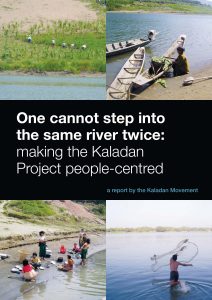Connecting Arakan and Chin States is the Kaladan River. Approximately 350 kilometres (220 miles) in length, it runs from its source in Mizoram, India, cutting a narrow valley through the mountains of Chin State, descending to cross the fertile plains of Arakan state, and finally emptying into the Bay of Bengal at Site-tway, Arakan’s capital. Currently most ships are unable to travel further than 240 kilometres (150 miles) upstream. The lower part of the Kaladan widens to form a fertile plain covering a total area of 3,640 square kilometres from upper Kyauktaw Township to Site-tway. Pristine forests and endangered animals are found along the the river’s upper reaches, in lands populated by several ethnic groups. In all, approximately one million people live in the townships along the river.
The Kaladan is the longest and most used river in Arakan State. Its river valley is 113 kilometres (70 miles) in length and is often referred to as the “Rice Bowl” of Arakan. Site-tway, Ponnagywan, Kyauktaw, Mrauk-U and Pauktaw townships are situated in its valley. The Paletwa region is situated along the upper part of the river, where floods occur at least twice each year. This river’s name is derived from the Arakanese words Kula Htarna, meaning “the river which exists in Arakan”. It is also commonly known as “Gissipanaddy”. The ancient capitals of Dhanyawaddy, Vesali and Mrauk-U indicate that civilizations of Arakan have flourished in the Kaladan valley for thousands of years. To this day, Mrauk-U is one of the state’s largest and most culturally significant cities.



